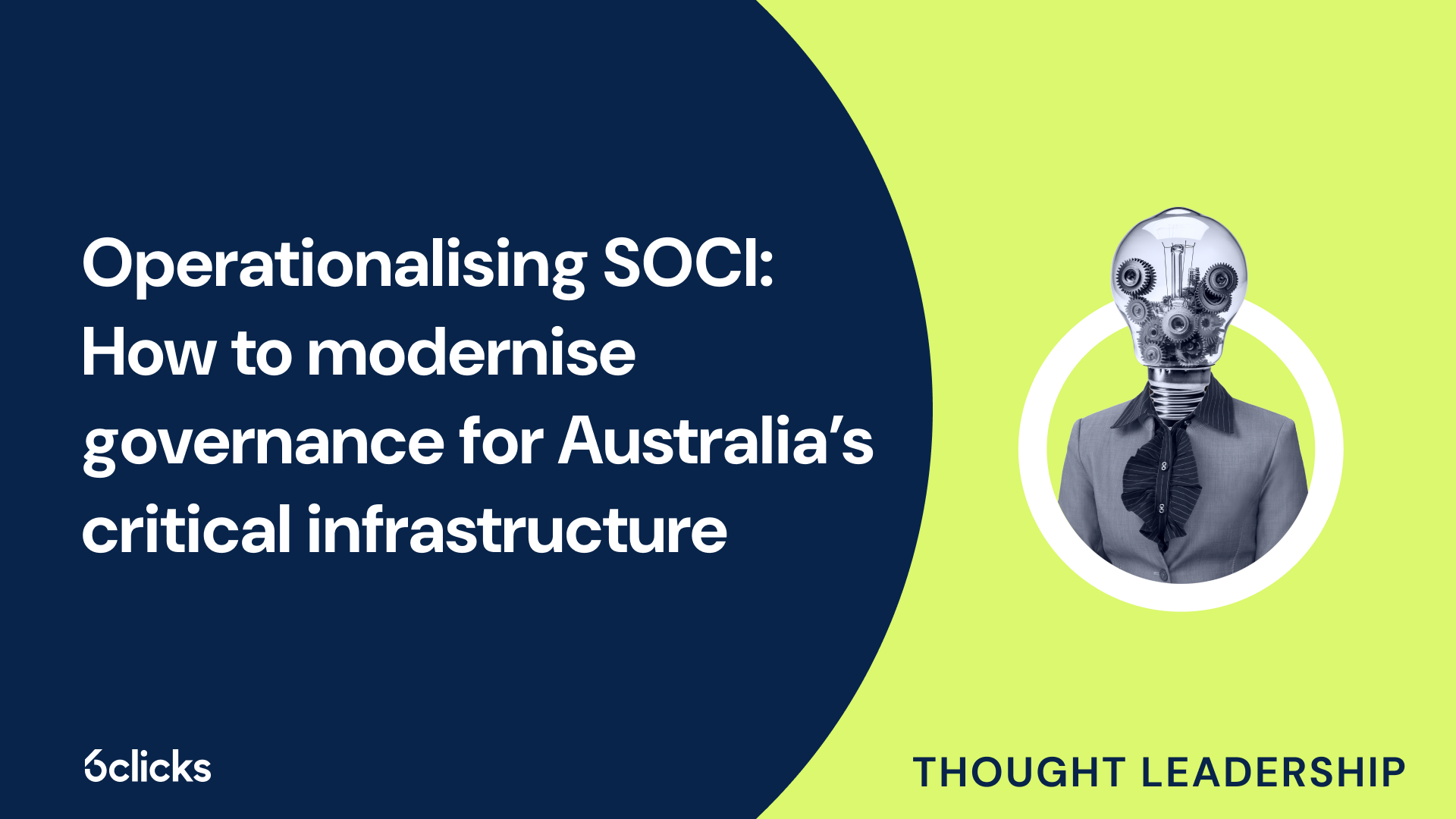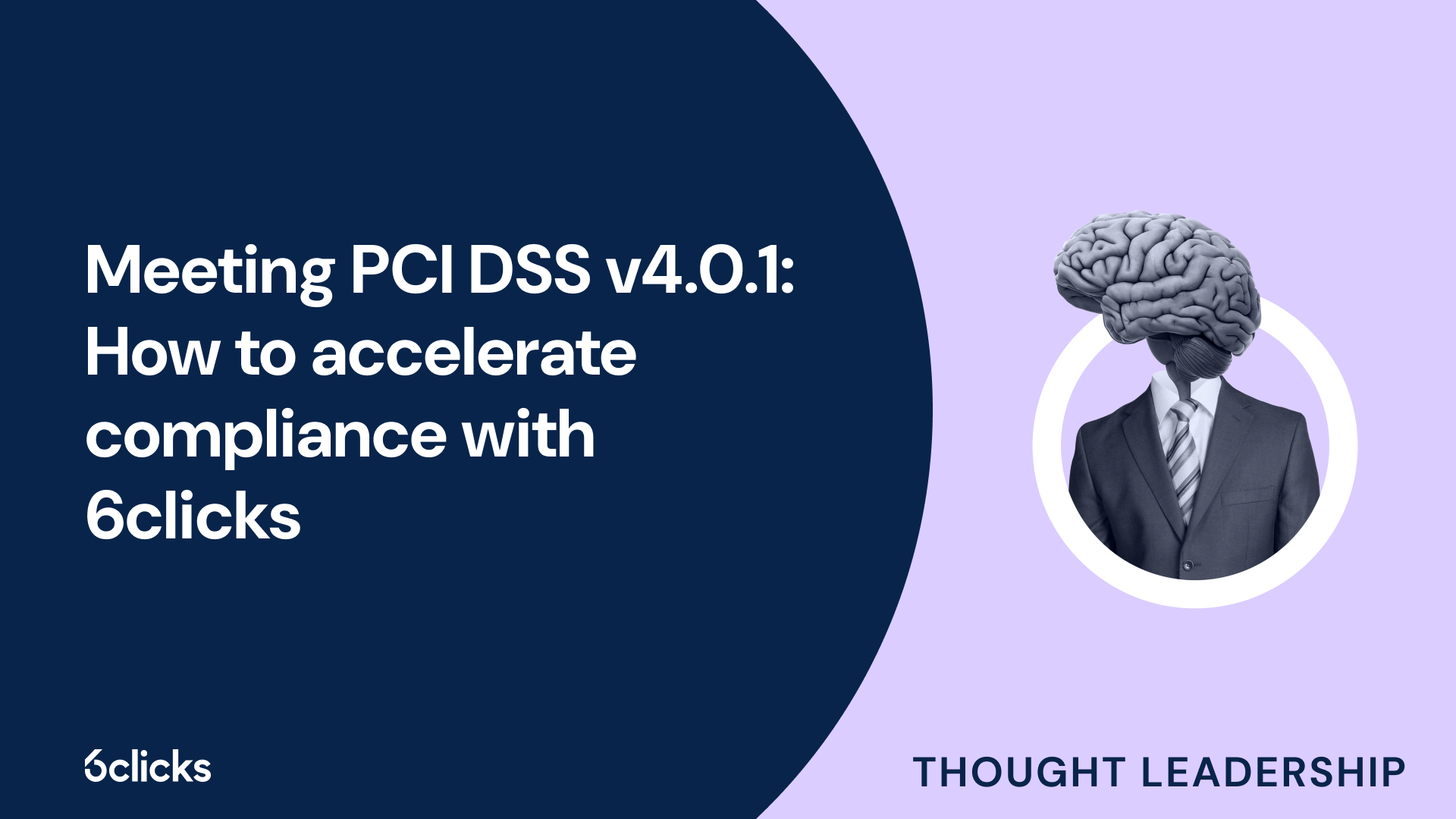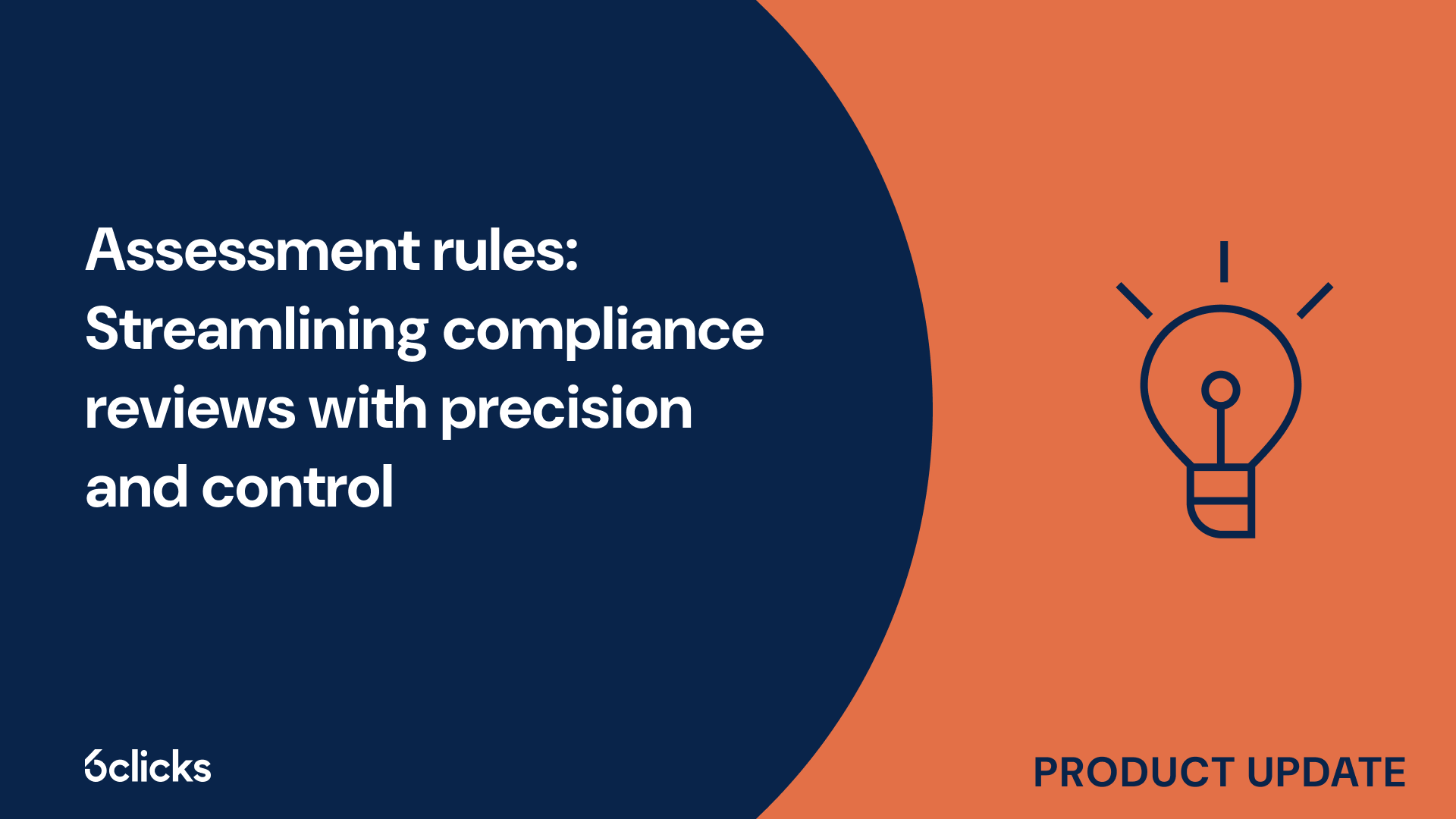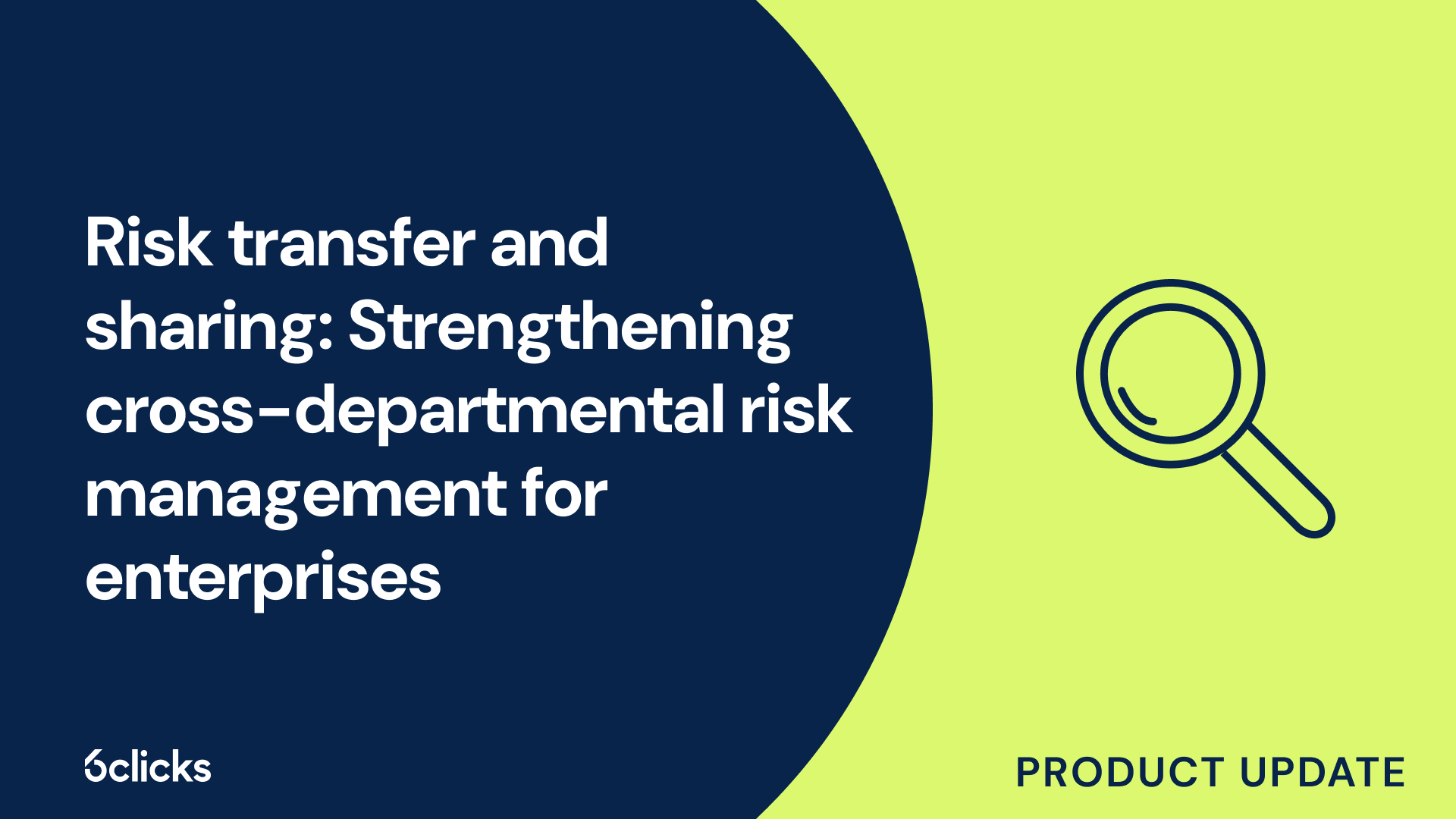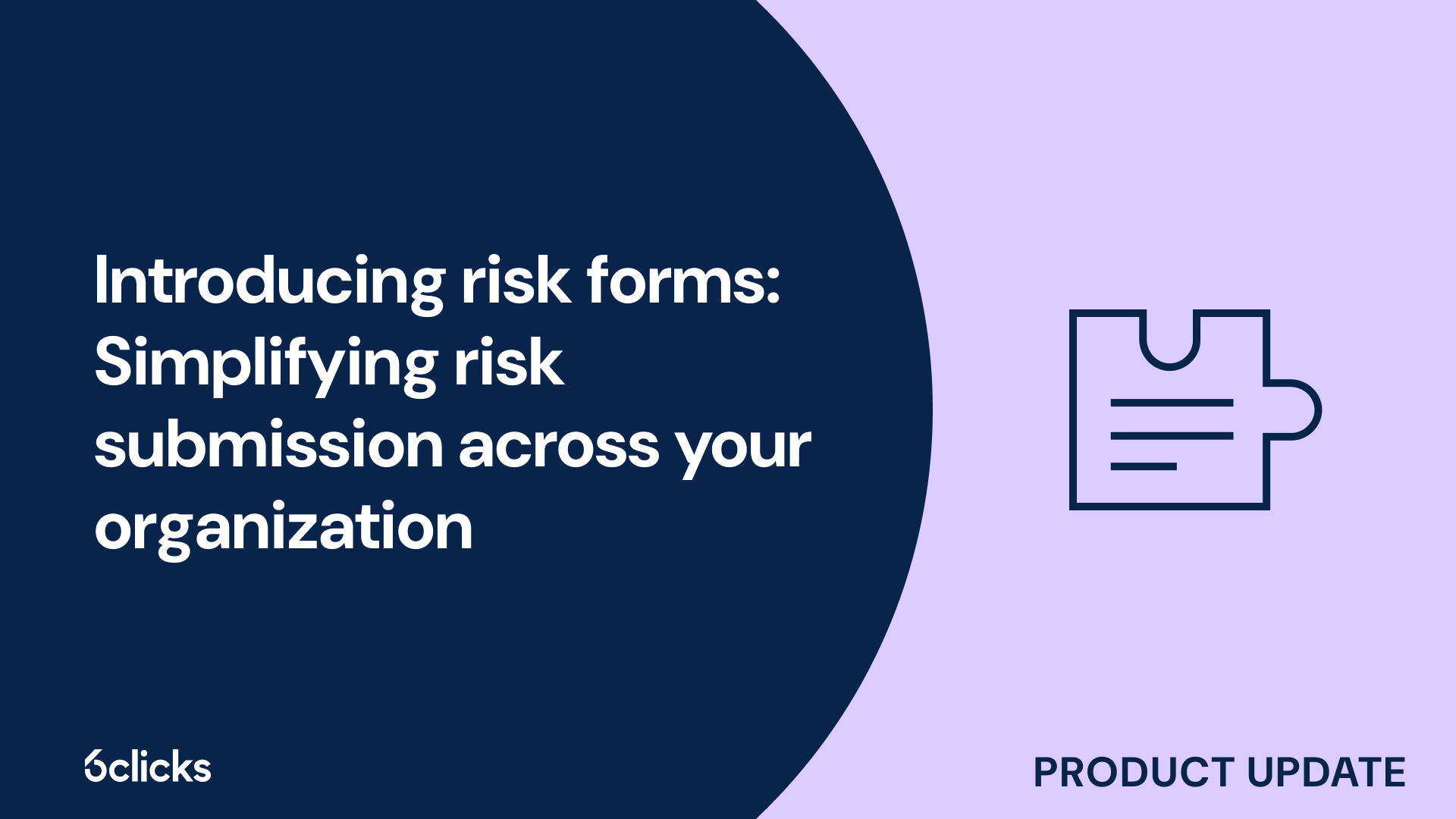The GRC buyer’s guide for 2025: Building resilience with AI-powered, federated solutions
Discover the ultimate GRC buyer's guide for 2025! Uncover how AI-powered, federated solutions transform compliance and security management for industries like government, aerospace, banking, and more. Learn about centralized control, continuous compliance, and advanced cyber GRC capabilities. Download now!
-1.png?width=200&height=249&name=Group%20193%20(1)-1.png)
The GRC buyer’s guide for 2025: Building resilience with AI-powered, federated solutions
What is enterprise risk management?
Enterprise Risk Management (ERM) is a structured and holistic approach that organizations use to identify, assess, manage, and monitor risks that could impact their ability to achieve strategic and operational objectives. Unlike traditional risk management, which often focuses on specific risks in isolation, ERM integrates risk considerations across all areas of an organization, enabling better decision-making, enhanced resilience, and alignment with overall goals. By addressing a wide range of risks, including strategic, financial, operational, compliance, and reputational, ERM helps organizations proactively respond to uncertainties, seize opportunities, and ensure long-term sustainability.
The benefits of Enterprise Risk Management (ERM)
Enterprise Risk Management (ERM) offers organizations a structured, proactive approach to identifying, assessing, and managing risks, ensuring long-term stability and success. Here's the key benefits of implementing ERM:
Enhanced risk awareness
ERM promotes an enterprise-wide understanding of both risks and opportunities that could affect organizational performance.
- Systematic risk identification: ERM creates a formalized process for regularly identifying and monitoring risks across all functions and levels of the organization. This includes identifying internal risks such as operational inefficiencies and external risks such as market volatility.
- Holistic risk coverage: It enables organizations to evaluate all types of risks, including financial, strategic, operational, and reputational risks, helping create a comprehensive risk profile.
- Culture of risk awareness: Encourages employees to think about potential risks in their day-to-day work, ensuring that risk management is embedded into the organization’s culture.
Improved decision-making
ERM empowers leaders with data-driven insights to make more informed and confident decisions.
- Informed risk-based decisions: With a centralized view of risks, decision-makers can weigh potential trade-offs and make better choices that balance risk and reward.
- Scenario planning: ERM allows organizations to model different risk scenarios, helping them anticipate various possible futures and make decisions that mitigate negative impacts while capitalizing on opportunities.
- Real-time data: ERM frameworks often leverage technology, providing real-time risk data and analysis, helping leaders act swiftly and avoid potential pitfalls.
- Better resource allocation: ERM ensures that resources are allocated where they are needed most, reducing wastage and ensuring that efforts are directed toward managing high-impact risks.
Strategic alignment
ERM integrates risk management into the organization’s overall strategy, ensuring that risk factors are considered alongside business goals.
- Aligning with organizational goals: By incorporating risk management into strategic planning, organizations ensure that risks are understood in the context of achieving long-term objectives, ensuring alignment with corporate goals.
- Risk-reward balance: ERM provides a framework for assessing how risks influence strategic initiatives, allowing organizations to prioritize opportunities with the best risk-reward profile.
- Supporting innovation: ERM doesn't only focus on risk avoidance; it also helps companies recognize new opportunities by addressing potential risks upfront. By managing risks effectively, organizations can take calculated risks to innovate and stay competitive.
Operational efficiency
ERM helps streamline processes, eliminate inefficiencies, and reduce operational costs, ensuring smoother day-to-day operations.
- Process optimization: By formalizing risk management practices, ERM helps identify process inefficiencies, redundant activities, and areas where resources can be optimized.
- Minimizing disruptions: ERM helps organizations create contingency plans, ensuring business continuity in the face of disruptions, whether caused by internal failures or external threats (e.g., natural disasters, supply chain interruptions).
- Proactive risk mitigation: Organizations can act proactively to minimize operational risks such as system failures, supply chain issues, or workforce disruptions, reducing the potential for operational stoppages.
- Improved monitoring: Regular reviews and updates of risk management strategies ensure that operational risks are continually monitored and managed efficiently.
Regulatory compliance
ERM helps organizations navigate complex legal and regulatory landscapes, ensuring adherence to laws and reducing exposure to legal risks.
- Proactive compliance: ERM frameworks include processes for identifying compliance-related risks, ensuring that organizations stay ahead of evolving regulations and avoid compliance failures.
- Minimized legal exposure: By identifying and mitigating regulatory risks early, ERM helps reduce the risk of fines, penalties, and reputational damage that could arise from non-compliance.
- Audit-ready framework: ERM supports organized, consistent documentation of compliance efforts, making it easier for organizations to demonstrate adherence during regulatory audits.
- Adapting to regulatory changes: ERM provides the flexibility to adjust risk management processes as regulations evolve, ensuring ongoing compliance.
Cost savings
ERM not only prevents losses but can also lead to financial savings by reducing inefficiencies and avoiding costly mistakes.
- Reduced losses: By identifying risks early, ERM helps prevent significant losses related to operational disruptions, financial risks, or reputational damage.
- Efficient risk transfer: ERM identifies opportunities to mitigate risks through insurance, hedging, or outsourcing, which can help reduce direct financial exposure.
- Streamlined risk management: Standardized risk management processes reduce redundancies, saving time and money spent on managing risks in a disorganized manner.
- Lower insurance premiums: Organizations with robust ERM frameworks are often seen as lower-risk by insurers, resulting in lower premiums or better coverage options.
Reputation management
Effective ERM helps protect and strengthen an organization’s reputation by demonstrating responsible risk management practices to stakeholders.
- Building stakeholder trust: Transparent risk management practices foster trust among investors, customers, employees, and regulators, enhancing the organization’s credibility.
- Maintaining brand integrity: By mitigating risks related to product quality, customer service, and ethical practices, ERM helps organizations protect their brand and reputation.
- Crisis management: ERM equips organizations with the tools and plans to manage public relations crises, helping to safeguard reputation during unexpected events.
- Customer confidence: Customers are more likely to trust businesses that demonstrate effective risk management, which can lead to increased loyalty, repeat business, and referrals.
Increased resilience
ERM enhances the organization’s ability to withstand shocks and recover from adverse situations.
- Business continuity: ERM includes business continuity planning, ensuring that essential functions can continue during disruptions, and minimizing downtime and loss of productivity.
- Agility and adaptability: ERM helps organizations stay flexible in the face of change, enabling them to pivot or adjust their strategies when new risks or opportunities arise.
- Quick recovery: With effective risk mitigation and contingency planning, organizations are better positioned to recover quickly from crises, reducing the long-term impacts of disruptions.
- Preparedness for future risks: ERM fosters a forward-thinking culture that continuously evaluates and prepares for new and emerging risks, improving long-term stability.
Summary
Enterprise Risk Management (ERM) is a comprehensive, structured approach to identifying, assessing, and managing risks that can affect an organization's ability to achieve its goals. Unlike traditional risk management, ERM addresses a wide range of risks—strategic, financial, operational, compliance, and reputational—across all areas of an organization. By integrating risk management into the decision-making process, ERM enhances risk awareness, improves decision-making, aligns strategies with organizational goals, and drives operational efficiency. It also helps ensure regulatory compliance, protect reputations, realize cost savings, and increase resilience, ultimately supporting long-term sustainability and success.



